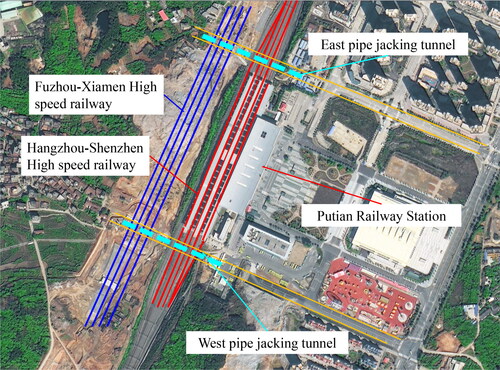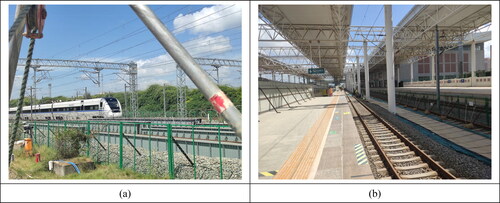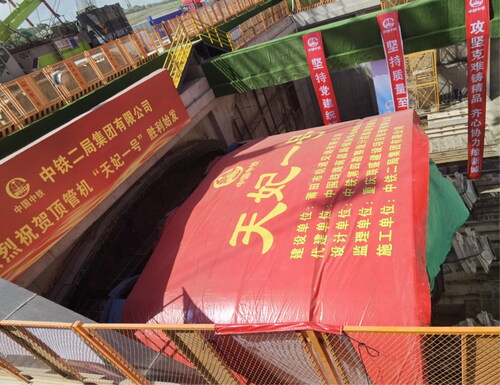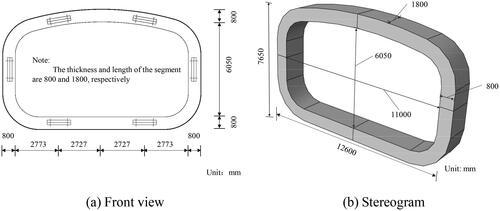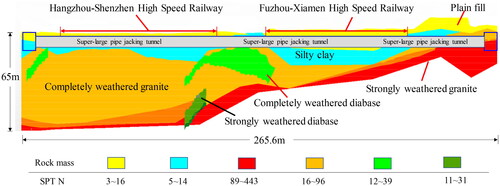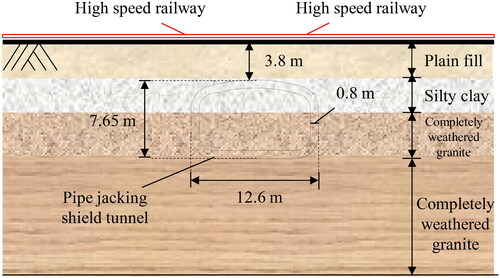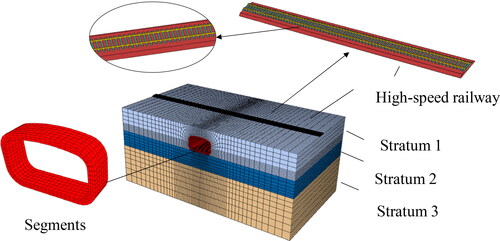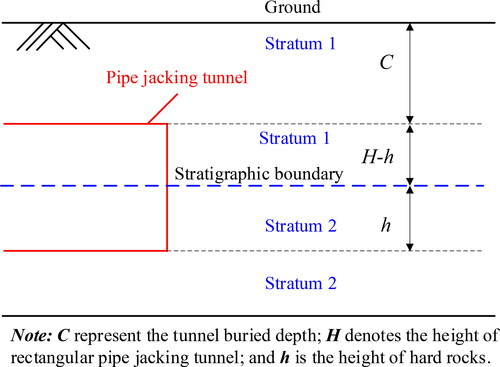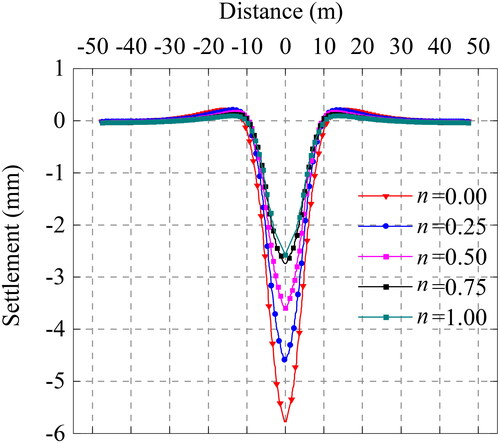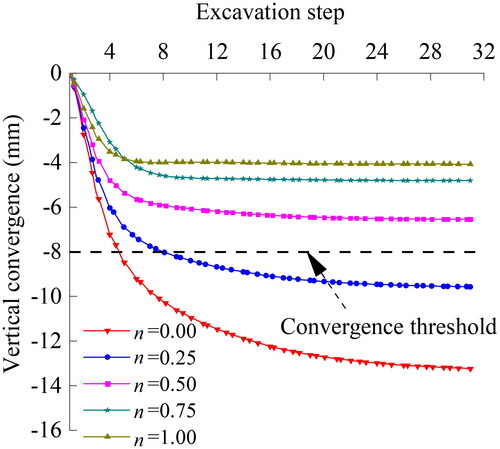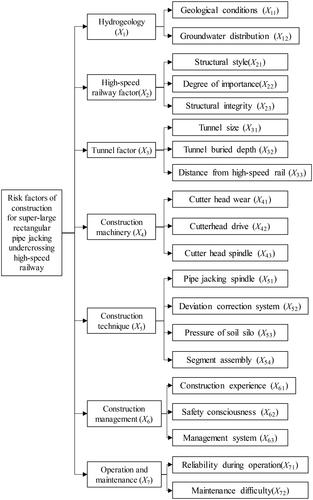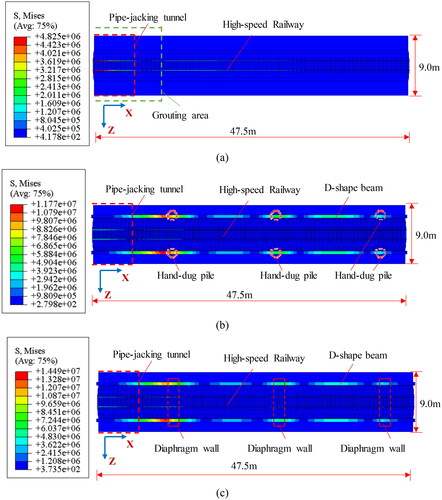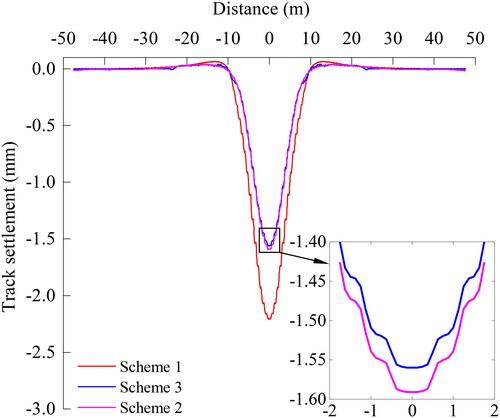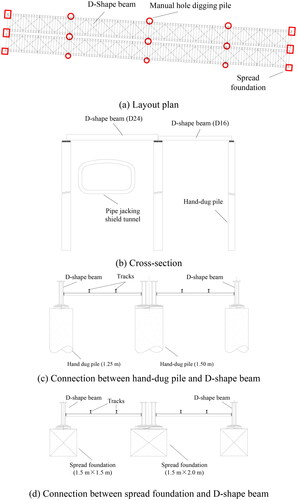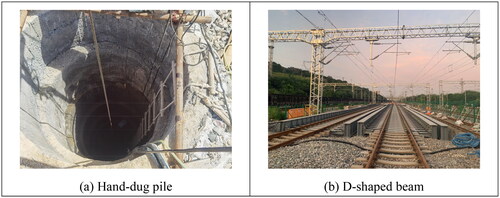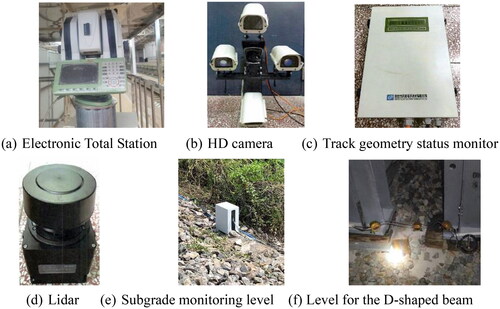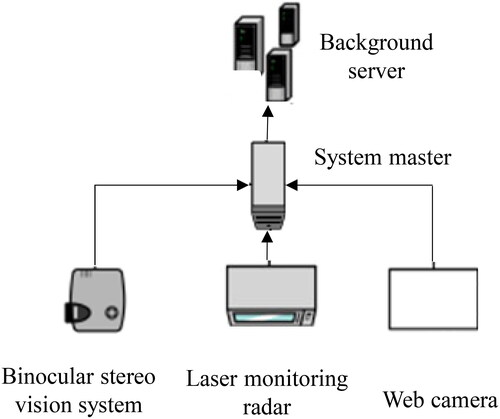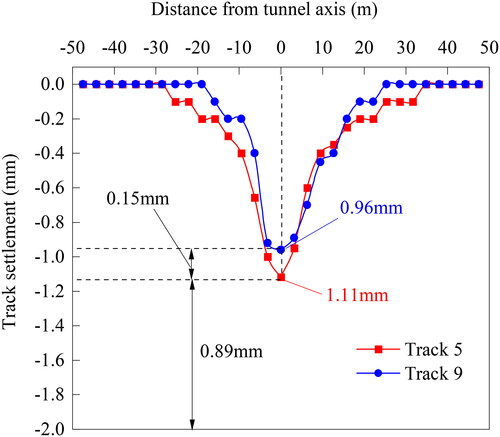Figures & data
Table 1. Main parameters of the pipe jacking machine.
Figure 8. CDP parameters; (a) Cracking strain-damage parameter in tension; (b) Inelastic strain-damage parameter in compression; (c) Yield stress-crack strain curve in tension and(d) Yield stress-crack strain curve in tension in compression.
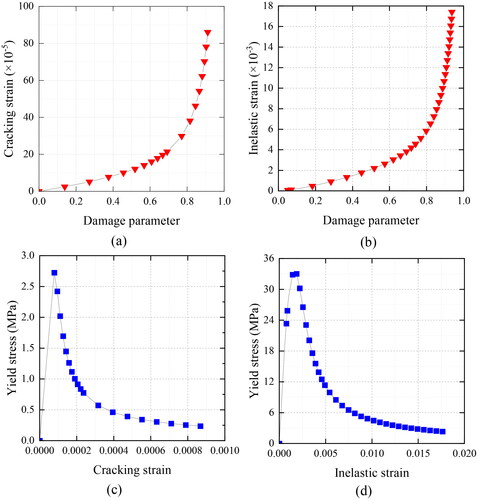
Table 2. Calculation parameters.
Figure 13. Minimum safety factor of the pipe-jacking tunnel.
Note: The circumferential and the radial number represent the measuring point (i.e., ) and the minimum safety factor, respectively

Table 3. Risk classification of super-large rectangular pipe jacking under high-speed railway.
Table 4. Risk level of pipe jacking under high-speed railway construction.
Table 5. Reinforcement schemes.
Table 6. Maximum of track settlement (Unit: mm).
Figure 18. Minimum safety factor of pipe jacking tunnel.
Note: The circumferential and the radial number represent the measuring point (i.e., ) and the minimum safety factor, respectively
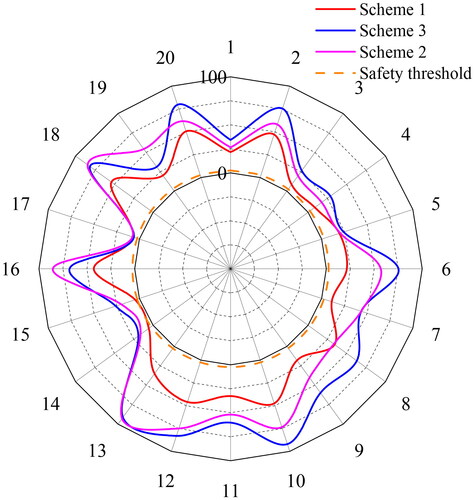
Table 7. Minimum of safety factor.
Table 8. Construction risk grade after reinforcement measures.
Table 9. Monitoring frequency.
Table 10. The double control value system.
Table 11. Comparative analysis of the field investigation and numerical simulation.
Data availability statement
The authors confirm that the data supporting the findings of this study are available within the article.

